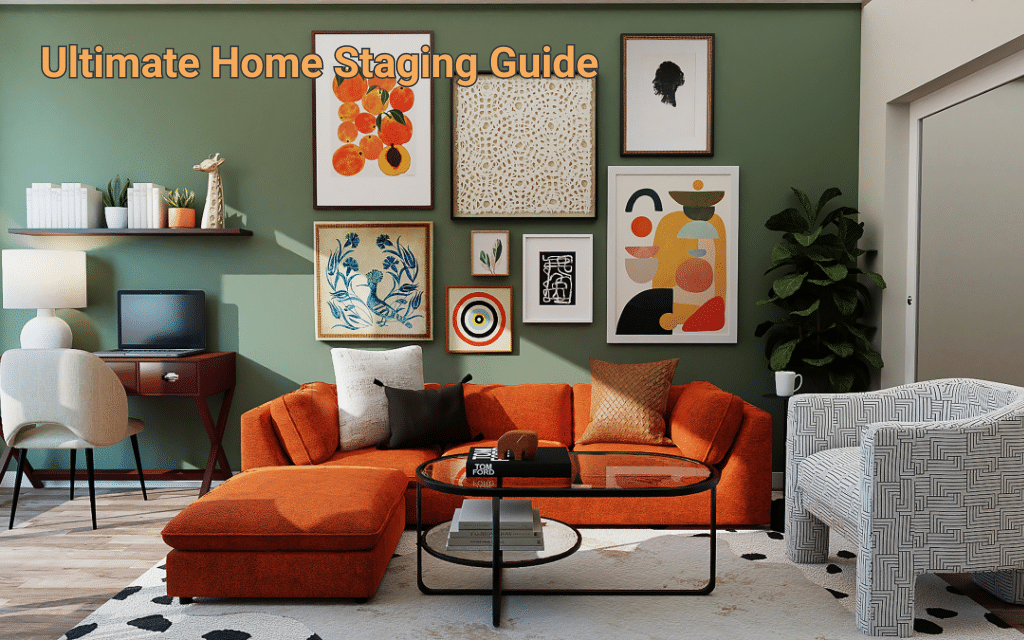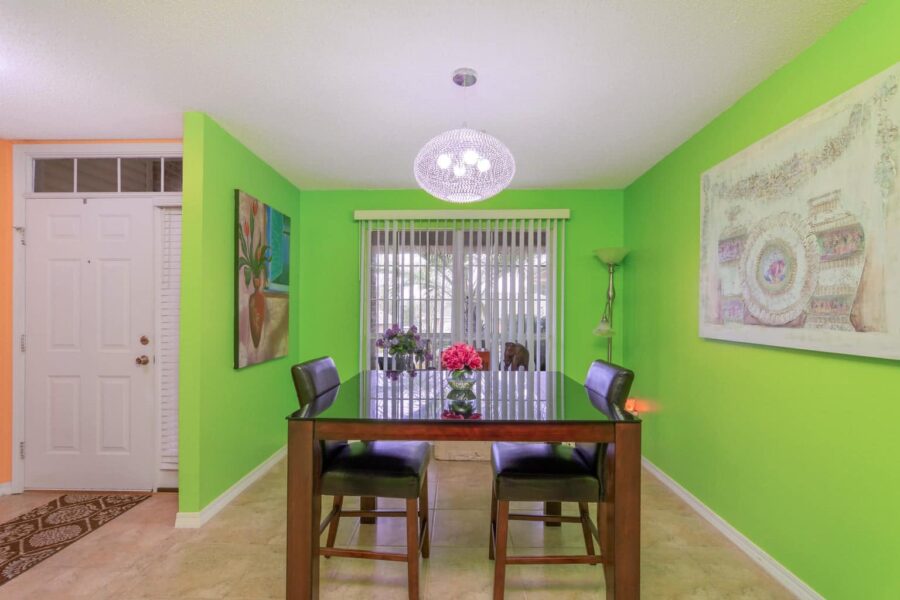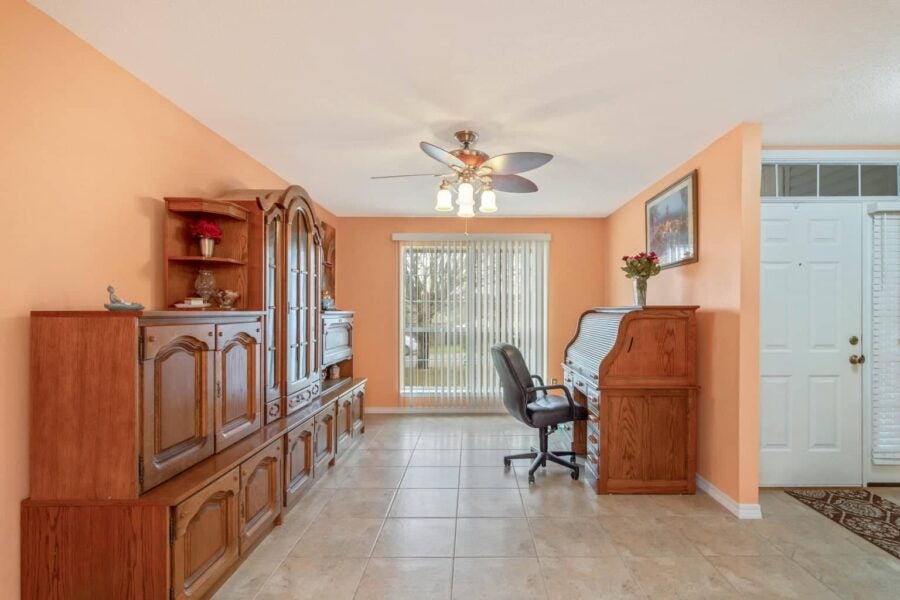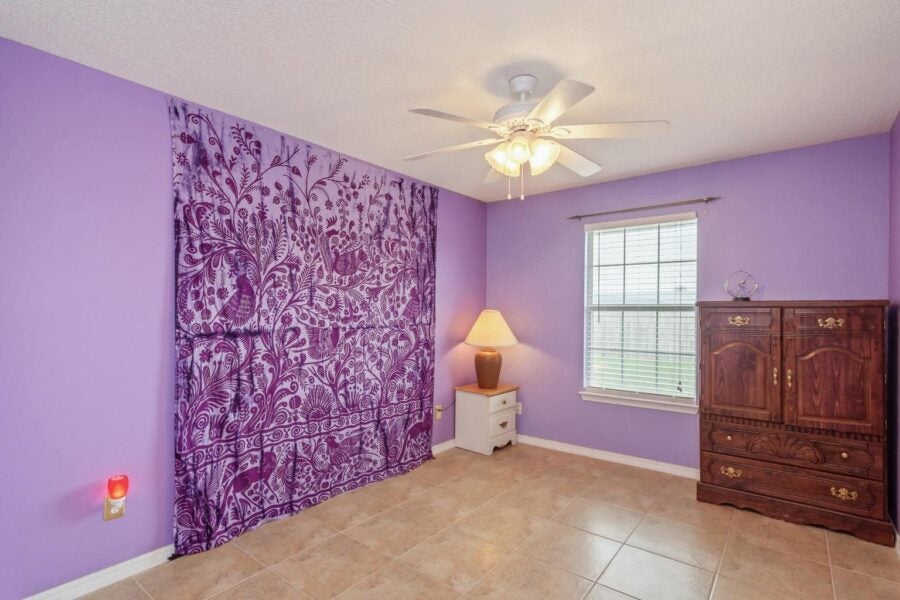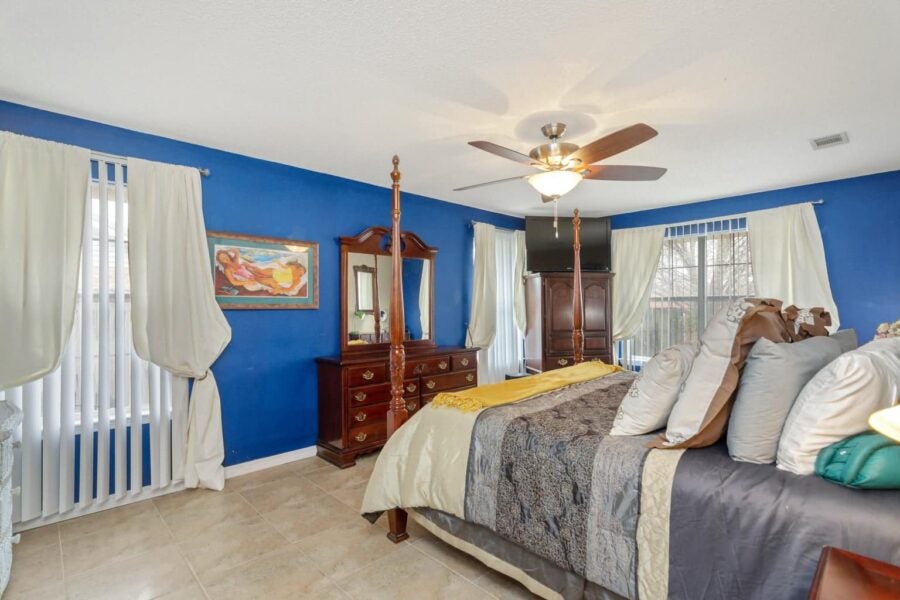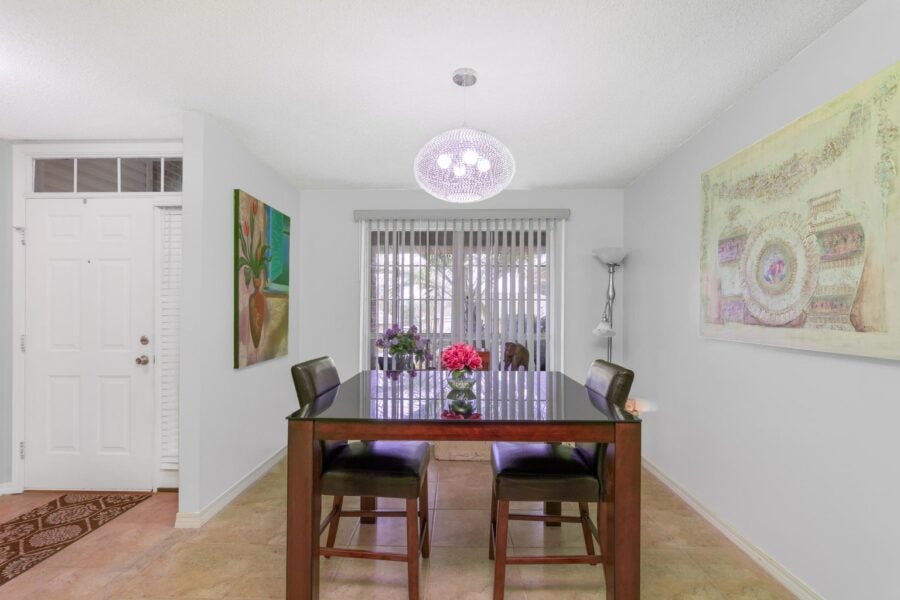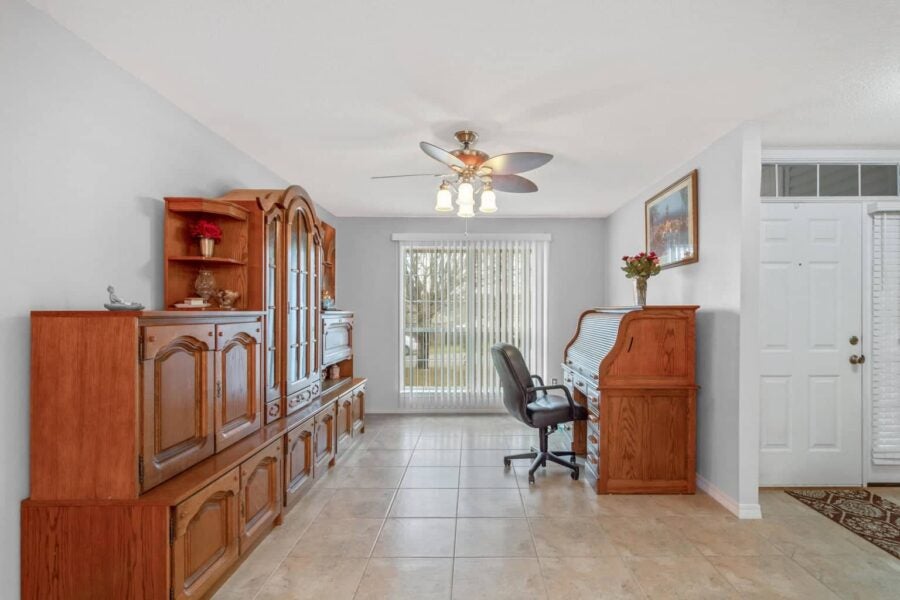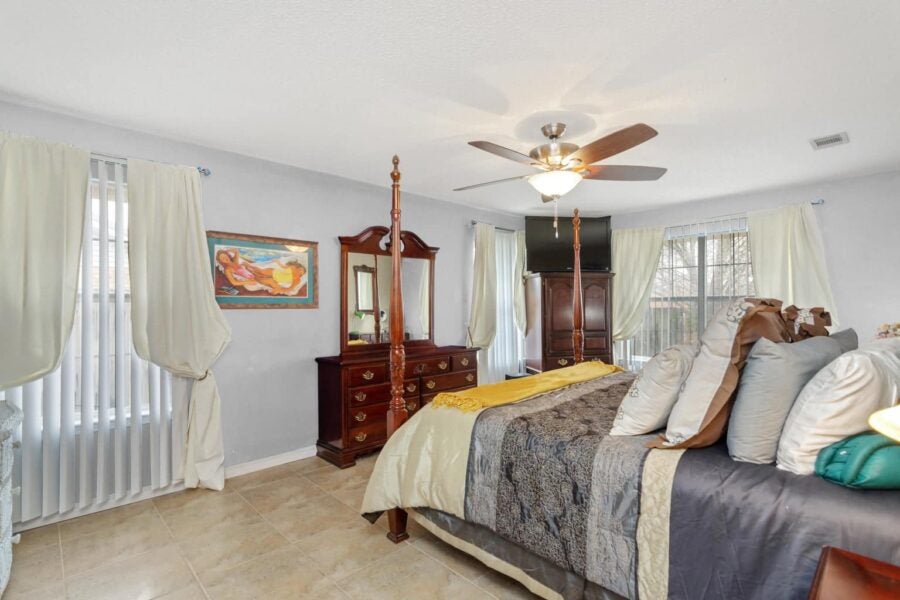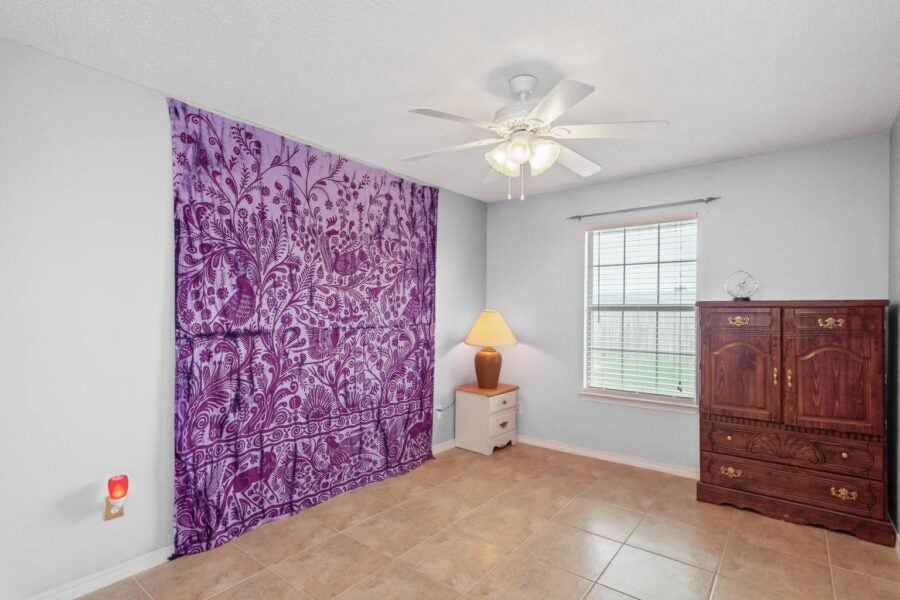Of the many marketing strategies that new listing agents struggle with, staging is probably the most challenging. Hiring a professional stager is expensive, and actionable DIY home staging tips are hard to come by.
I’ve never hired a professional staging company to stage any of my listings. As a newer agent, I couldn’t afford to pay someone hundreds or thousands of dollars to stage a home. So, I had to figure it out on my own, and I bet you’re in the same boat.
So, first I’ll help you understand what home staging is and why it’s important. Then I’ll break down some of the best home staging tips I learned along the way and some simple strategies to help you sell more listings in less time.
After the tips, I’ll include a DIY shopping guide to get luxury furniture and decor for home staging at budget prices.
Home Staging 101: Tips for Helping Buyers Visualize Their Dream Home
Before we jump into the tips and shopping guide, here is a quick rundown of the basics of home staging, how much it costs and who pays, and a walk-through of the home staging process.
What Is Home Staging?
Home staging is a real estate marketing strategy where agents, homeowners, or professional home stagers use design choices, furniture, and decor to sell the home faster. The goal of home staging is to help potential buyers visualize themselves living happily in the home. The staging process often depends on the current state of the listing. For example, a home that’s been occupied for a couple of decades might need decluttering, while an empty listing is more likely to benefit from sample furnishings.
Why Do I Need to Stage a Home?
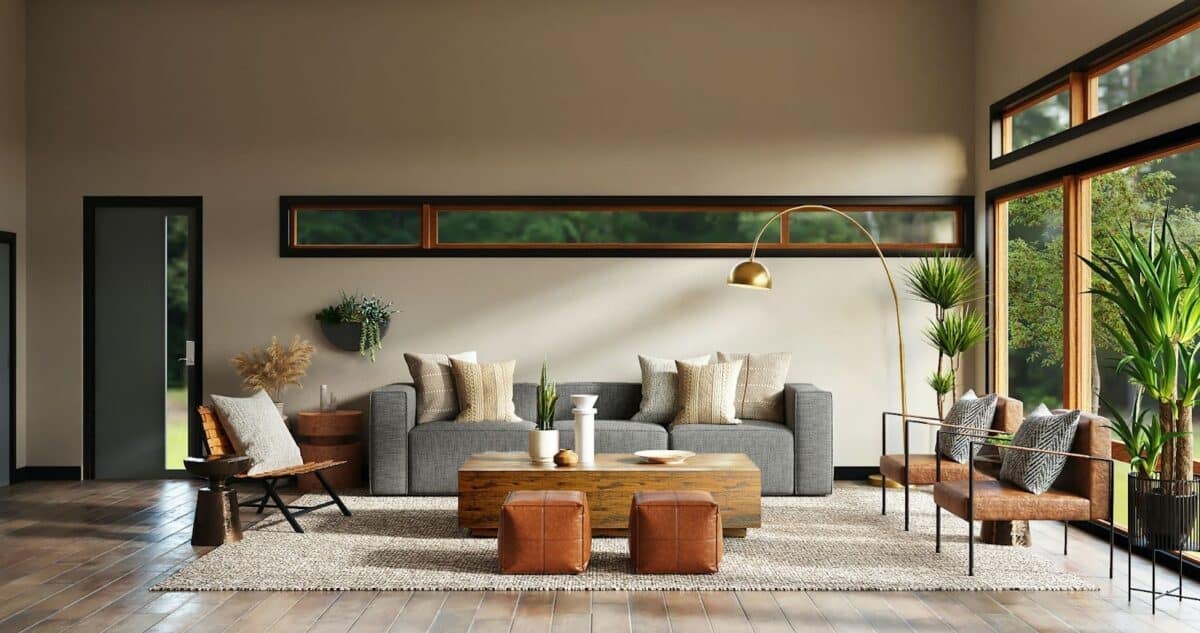
Staging a home may be necessary for a few different reasons. First, decluttering the home to remove the specific style of the current owners is important. Removing family photos, children’s art from the fridge, the majority of knickknacks, and even some of the furniture can allow others to see themselves in the home more easily.
I often explain to my sellers that the easiest way for someone to fall in love with your home is for them to see themselves living in it. It’s so easy to get distracted by someone’s personal memorabilia and not connect with the home. The more depersonalization the seller can do, the easier it will be for a future buyer to visualize themselves (and their stuff) in the home. After falling in love with a home, buyers will rationalize with the other details like location, size, and price.
Any distractions a seller leaves in the home have the potential to throw buyers off or overshadow the best attributes of the listing, even if the experience is positive. For example, I visited a home on our MLS tour once that had the coolest music room I’ve ever seen. There were pictures of famous people on the walls, presumably with the homeowner, an upright bass, an organ, music on a stand, and a harp. I spent more time in that room than I should have and didn’t remember much else about the home. I had a similar experience when the sellers had two big, gorgeous dogs in kennels inside the home.
As an added bonus, when you set the home up in a way that showcases the home in the best possible light, your photos will really pop on Zillow and realtor.com, which is where you’ll first attract future buyers.
📌 Pro Tip
Never show a home before it’s ready to be shown. You only get one shot at making that all-important first impression with a potential buyer.
How Much Does Home Staging Cost?
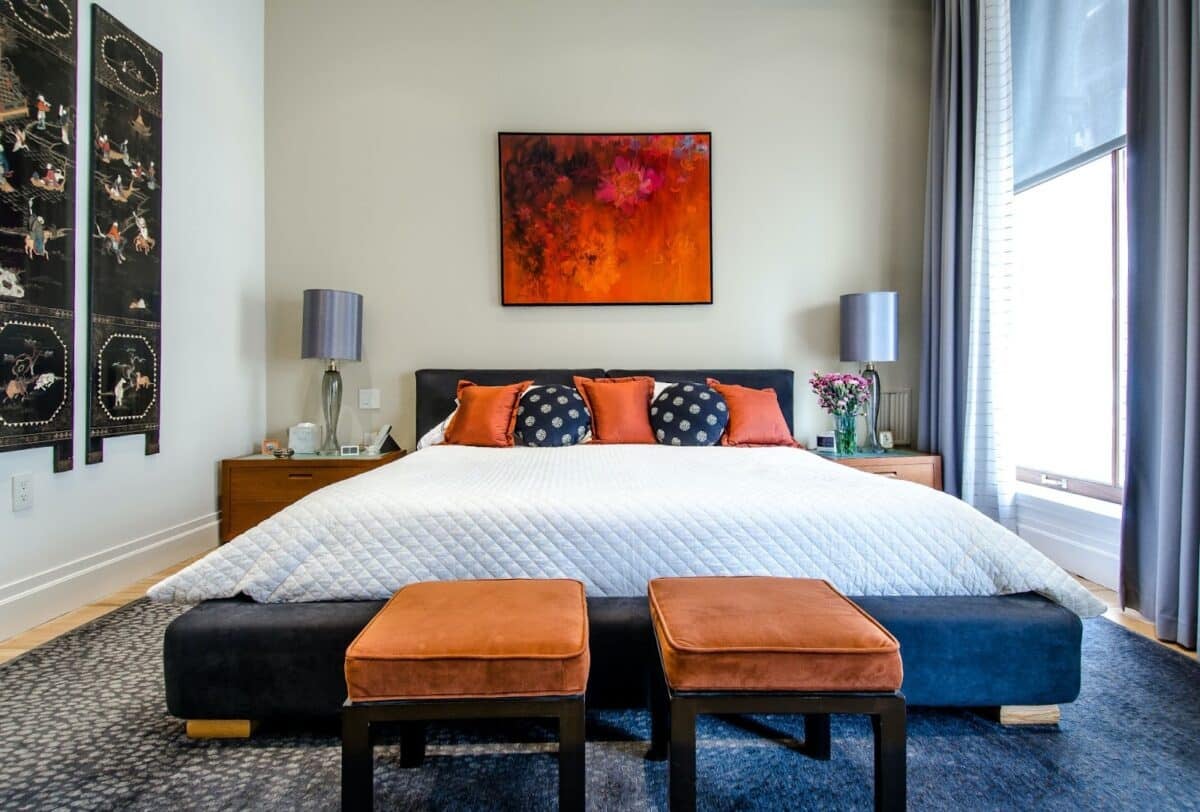
Home staging can cost anywhere from $500 for a quick coat of paint and some sweat equity to well over $50,000 for a months-long staging project in a large luxury home. According to the National Association of Realtors’ (NAR) 2023 Profile of Home Staging Report, the median cost of staging a home was $400 if personally staged by the listing agent, and $600 if staged professionally.
Professional stagers generally charge a consultation fee of $250 to $1,000-plus and then charge a monthly fee that can range from $500 to $700 per room. The monthly fee usually covers furniture and decor rental as well as design expertise.
It’s worth checking with your brokerage to see if the company has furniture or decor that agents can use to stage listings. Some agents begin collecting their own staging decor to use. In fact, sometimes agents end up migrating into home staging as a side hustle. You can start adding to your collection of staging decor now and build up a sizable stockpile quickly, especially if you use the tips in the shopping guide below.
I typically bundle in staging as part of the services sellers are already paying me for. I start the staging process by asking my sellers to deep clean, declutter, and remove some furniture. We walk through the home together and I will give them directions on what should be done. I created a simple checklist for my sellers with basic items, like removing family photos, removing oversized furniture, updating light bulbs to LED, etc., and blanks at the bottom for any additions.
Breaking Down Home Staging Costs
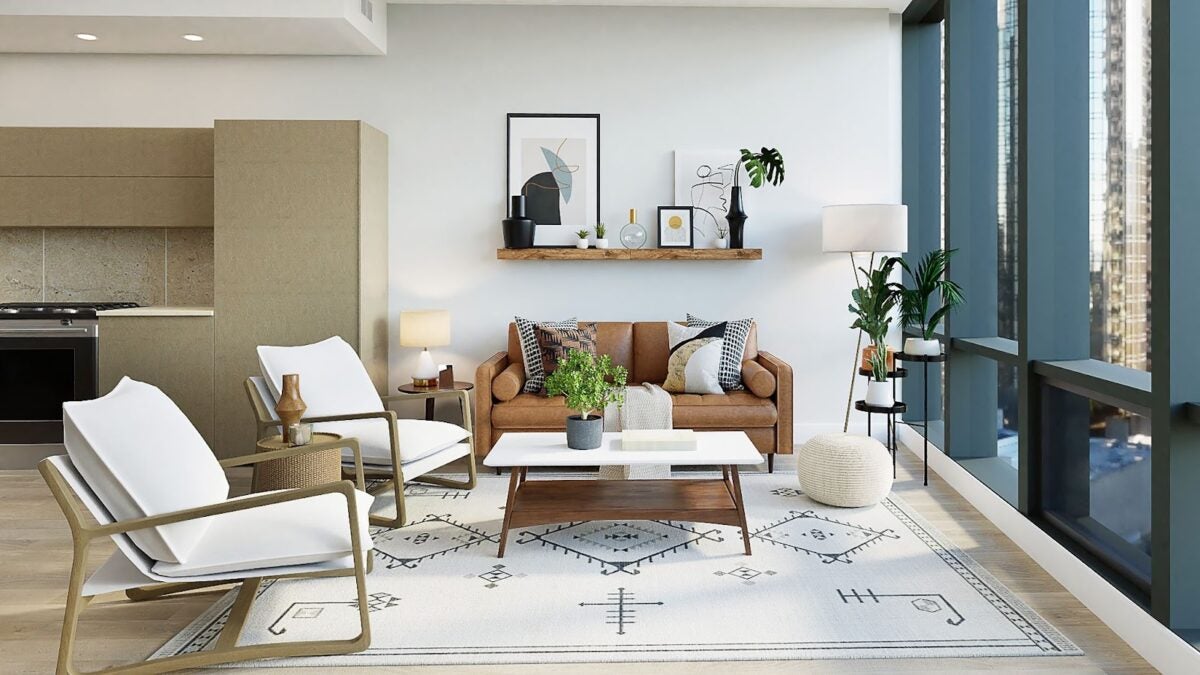
The costs of home staging are generally broken down into two categories: expenses for buying or renting furniture and decor, and expenses for the labor involved in staging the home or making repairs like painting or refinishing floors.
After I have my sellers clean and declutter, we discuss things that need to be repaired. If the walls need to be painted or that leaky faucet in the kitchen sink needs to be fixed, I tell them how fixes will affect the asking price for the home.
I also keep the names and phone numbers of contractors on my phone at all times so I can share them with my clients. Some repairs may be more important than others. I know what home inspectors look for so I can usually point out things I notice, like wood rot around the door, leaking faucets, or an old roof.
But I might also point out things that are aesthetically important, such as paint that needs some attention, the front lawn, a fence that has rotted panels, and even weeds in the flower bed. You may not think of all these things as staging, but they are. All of these things will make a difference in how long it takes to sell the homes and at what price it sells for.
These items range in cost from a simple $50 repair to a $15,000 roof replacement. And yes, these costs for repairs can push your sale out a little farther. But if you don’t take care of the simple things upfront, it will only cost you later in terms of trust from your seller, time sitting on the market, the final sale price, and ultimately your commission.
What Is the Home Staging Process?
The individual steps in staging a home will depend on what kind of home is being staged and who is doing the work. But basically, you can follow this blueprint:
- Get a signed listing agreement in hand
- Walk through the home with the sellers
- Give the sellers a checklist of what they can do themselves
- Point out everything that needs to be removed from the home
- Discuss decor options with seller (will you use their decor, bring in some outside decor options, or hire a staging company)
- Discuss repairs to the home, especially large costly ones, with seller
- Establish timeline for repairs to be completed
- Discuss landscaping, include power washing, adding flowers and mulch to flower bed, hiring a mowing service, etc.
- Discuss any smells that need to be addressed (add air fresheners, if needed)
- Add additional decor or furniture if needed (if home is empty, plan to stage with rented or owned pieces)
- Get pro photography
- Add to MLS listing and go live
Now that you have a blueprint of the steps in the home staging process, let’s talk about specific tips to help you become a master stager.
19 Clever Home Staging Tips From Top Agents
1. Start With the Curb Appeal
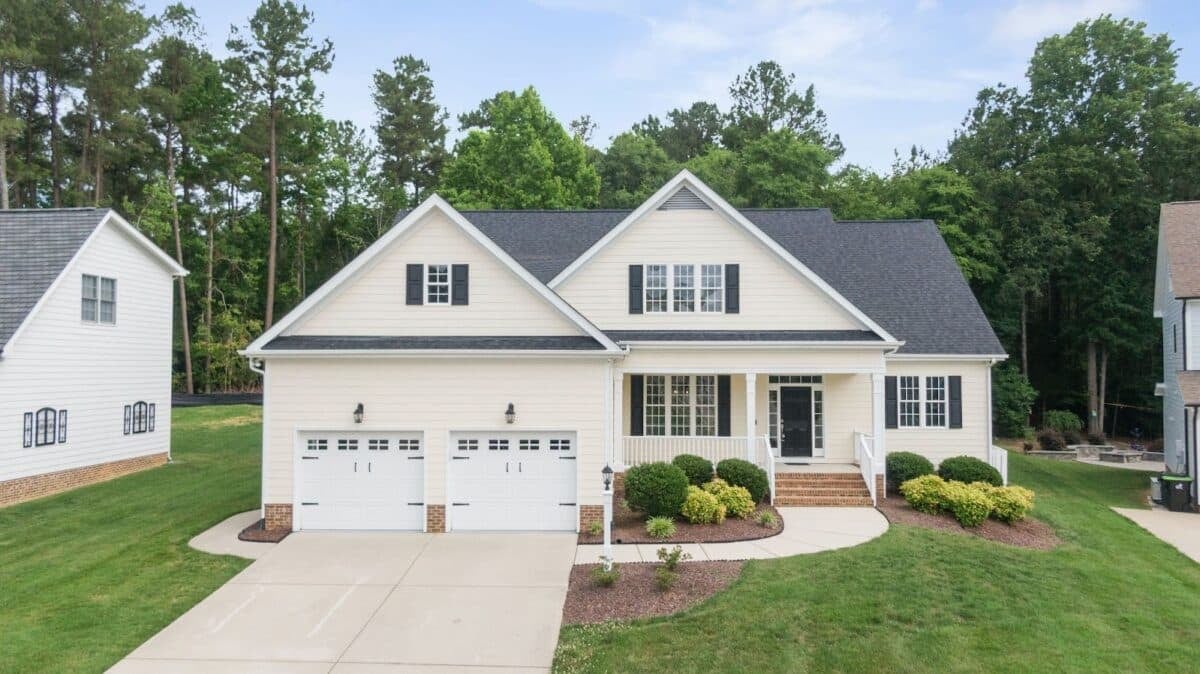
Curb appeal is like the subject line of your email: If it’s not nice enough on the exterior to engage your buyer, they’ll never see the work you and your sellers put in on the interior. So, entice them to come inside with a groomed landscape that sells.
That’s why staging a home begins on the exterior. Don’t forget to do the obvious things like mowing the lawn and edging around sidewalks and the driveway. To really give your listing a color pop, add some seasonal shrubs or flowers to the flowerbeds. Trim any hedges and trees to make everything look crisp and well-kept.
2. Stage Every Room With a Distinct Purpose
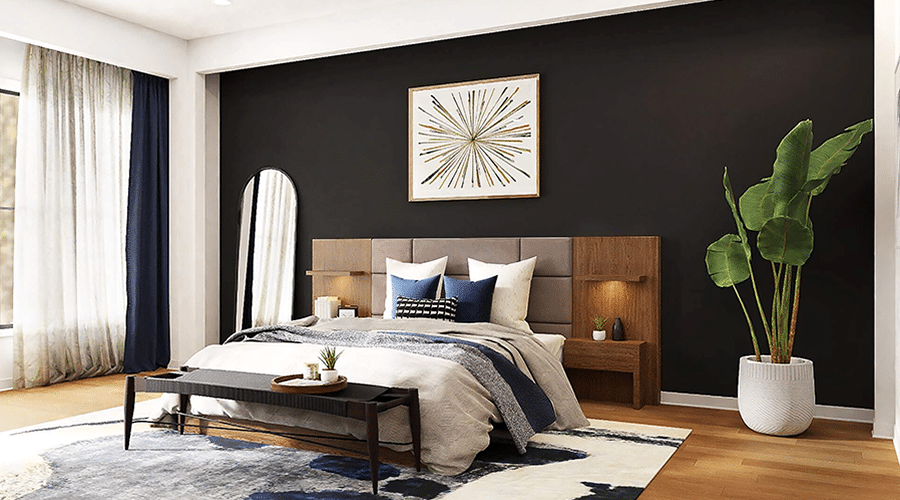
When you’re staging a home, always remember that you are presenting your buyer with a fantasy of what their home could be, not how they might actually live. Even if they end up throwing an exercise bike in the living room and a work area in the dining room the first week they move in, always stage your rooms with one purpose and one purpose only. If you don’t, you’ll break the fantasy.
📌 Pro Tip
Virtually stage a bedroom as a home office to add to your Zillow listing. Adding an additional option will help more potential buyers visualize themselves in the home.
Since nothing adds value to a home like more bedrooms, you should almost always stage any room that can legally be a bedroom as a bedroom. That said, many of today’s buyers who work from home are looking for another perk—a home office. This is why virtually staging a bedroom as a home office is a quick and easy way to kill two birds with one stone. You can virtually stage a home office in minutes using Apply Design for just $7 per image.
3. Home Staging Tips That Make Any Room Feel Larger
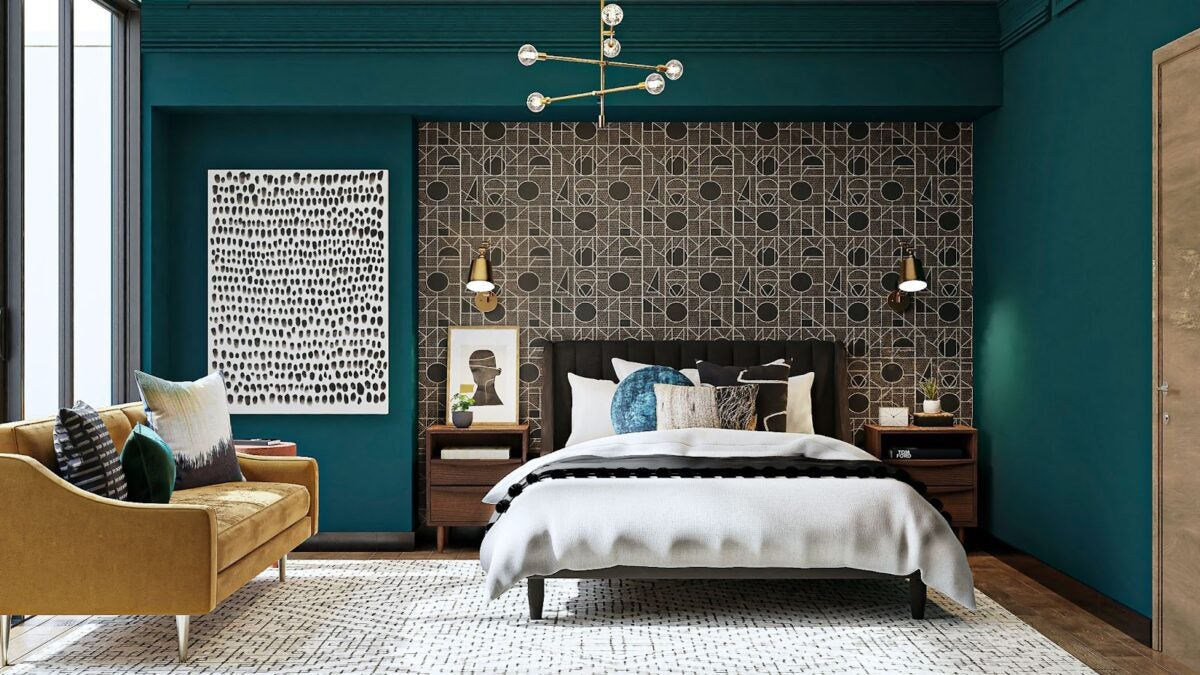
If you want to instantly add a bit of glamor to a bedroom, consider adding wireless wall-mounted lighting instead of table lamps on the nightstands. If you buy two sets of wall-mounted light fixtures—one modern, one traditional—you’ll be ready to stage any style of home. Since you won’t need to wire them, installation takes just a few minutes. LED lights save energy so your battery-powered sconces will look bright without using a lot of electricity.
You can also add height to any room with window drapes and panels that extend from the ceiling to the floor, not just over the actual windows. Find some decorative curtain rods and hang them high, just below the ceiling and add sheer or blackout drape panels that extend all the way to the floor.
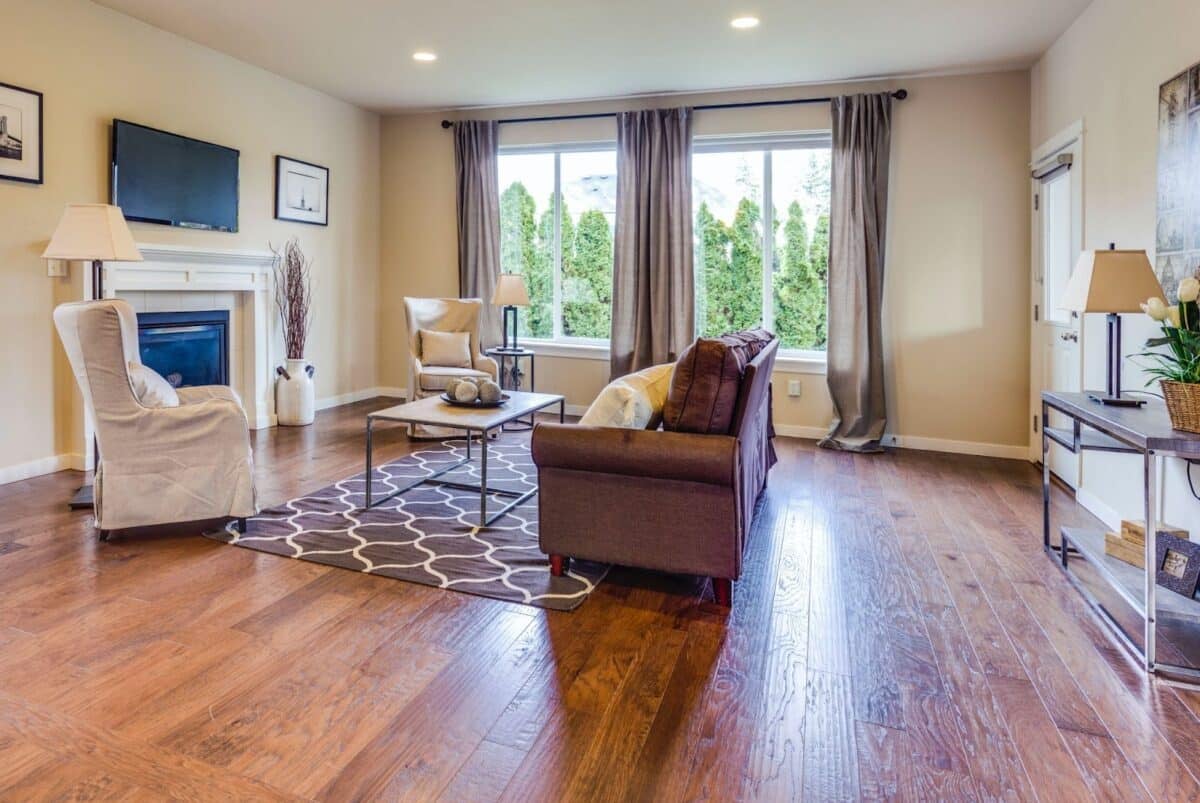
4. Keep It Light With Floating Shelves
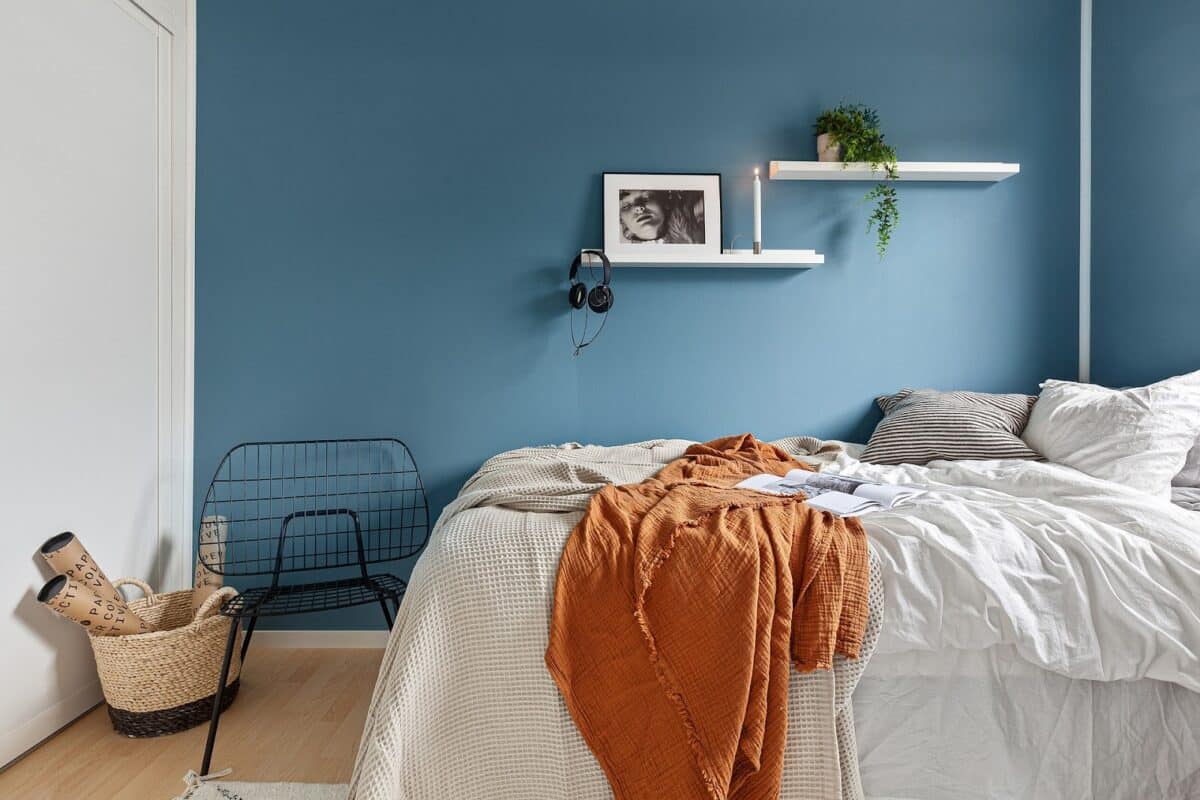
Accessorizing tight spaces can be challenging, so it’s no surprise that many listing agents and even professional stagers struggle with it. One clever way to solve this problem is floating shelves.
Large pieces of furniture like bookcases can take up the real estate in a room and make it feel cramped. Using floating shelves gives you space to add interest or accessories without taking up floor space.
5. Use Mirrors or Reflective Art as Home Staging Props
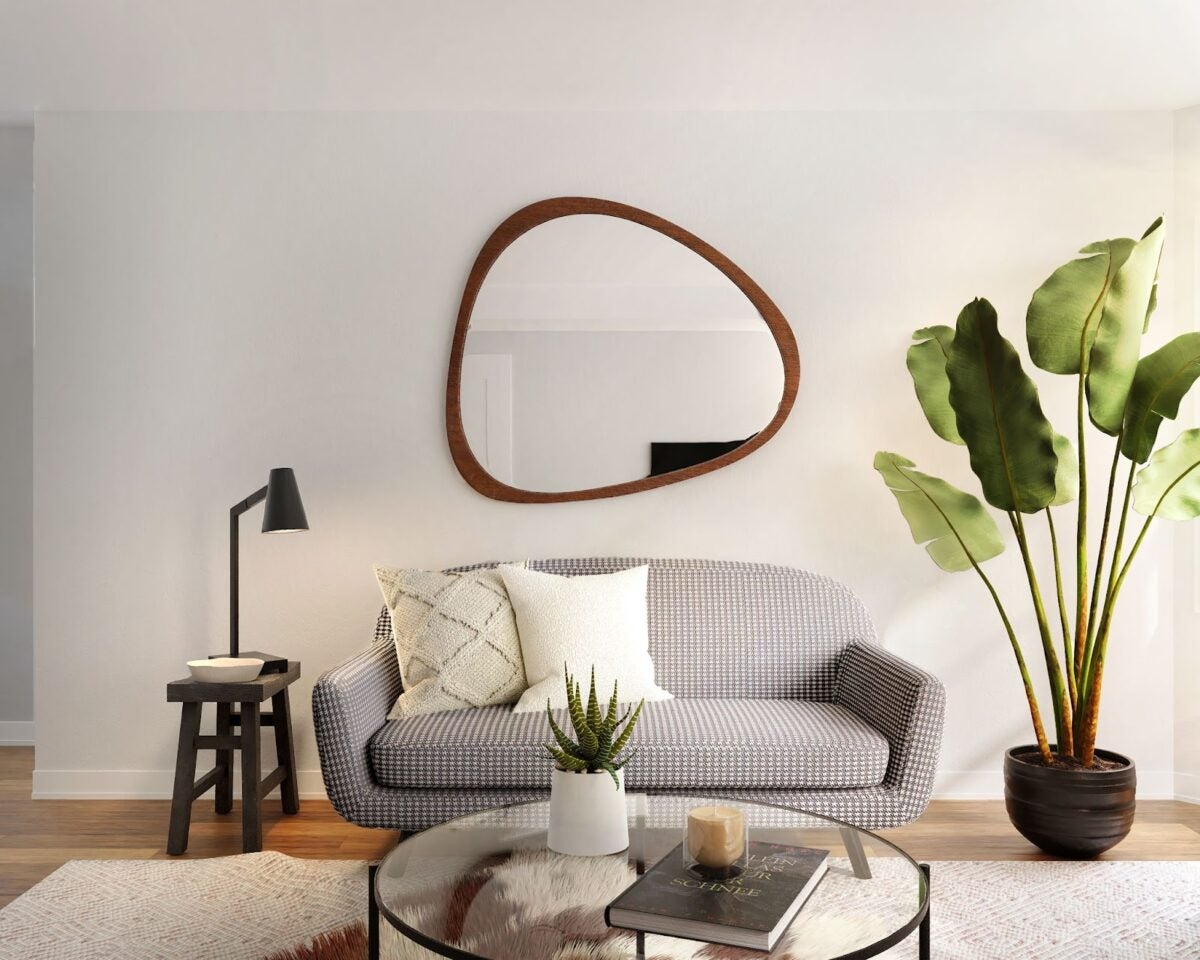
Placing a mirror on a mantle or leaning one against a wall instantly adds light and depth to any room. However, mirrors can also be statement pieces that can work as affordable focal points for a room.
6. Break Up Books on Shelves
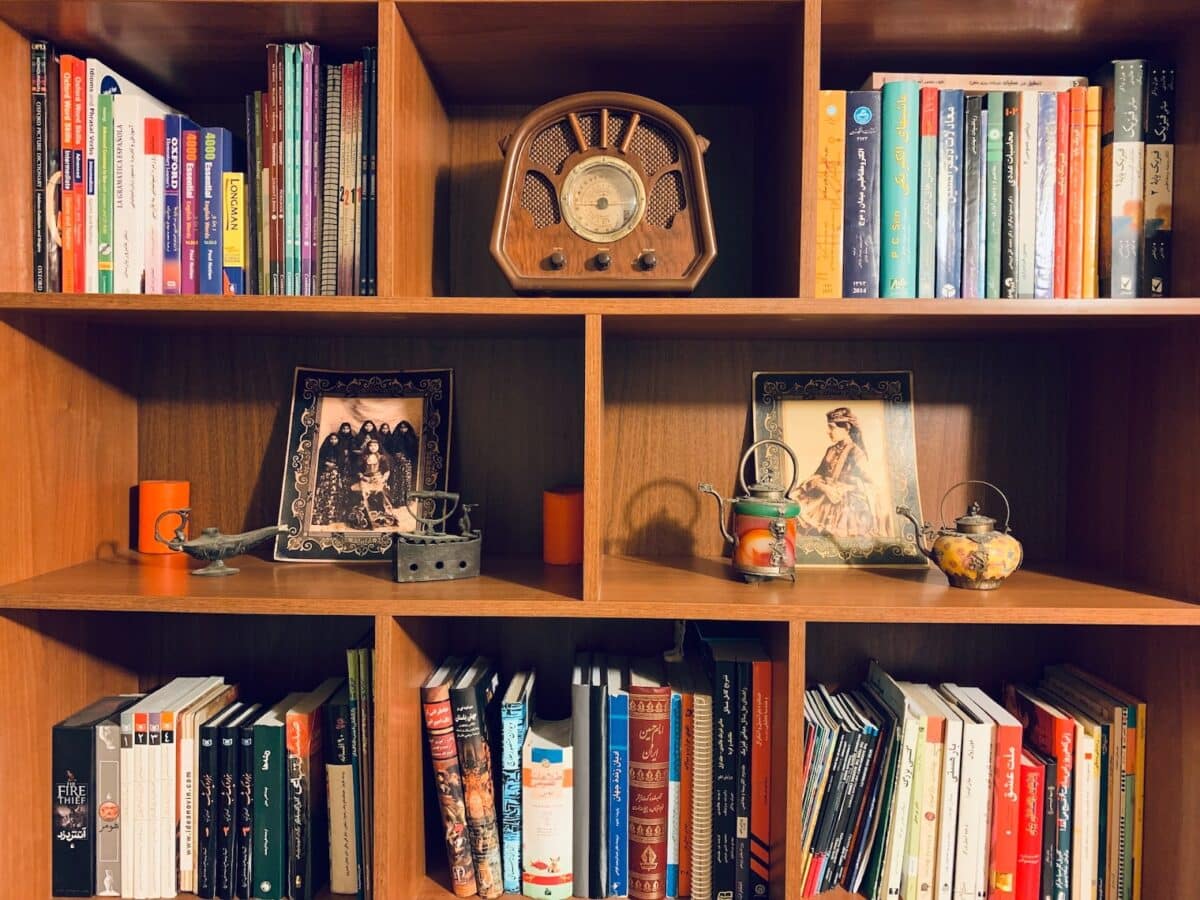
If you’re trying to stage a home that’s filled with books, try removing some from the bookshelves and replacing them with small sculptures, vases, or collectibles. This helps break up the look of a wall of books and can make a room feel more open and inviting.
7. Add Seating to the Primary Bedroom
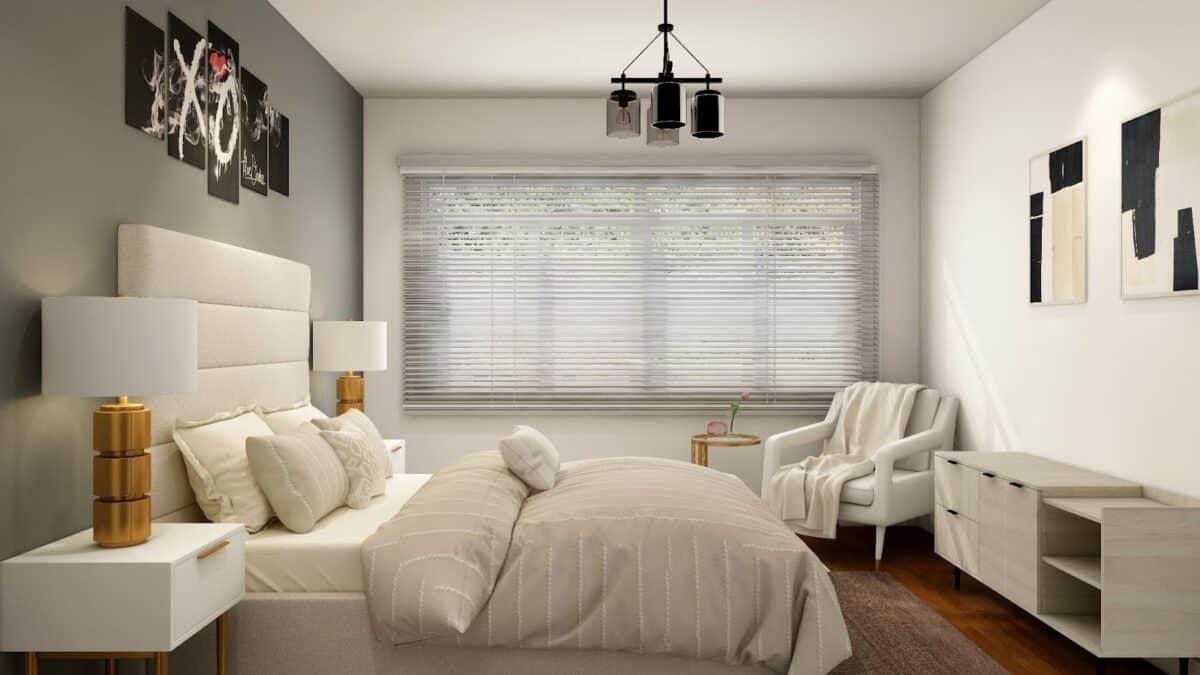
Since most primary bedrooms have the extra space, try adding a seating area when staging the room. You may not have space for a loveseat, but a small upholstered bench at the foot of the bed or a comfy chair in the corner will make the bedroom feel much more inviting and cozy.
8. Remove the Clutter, Not the Personality
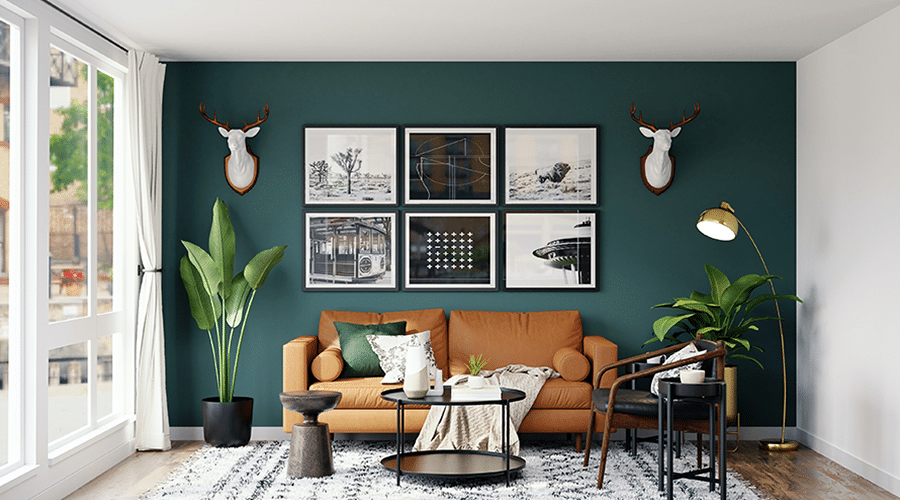
Whenever I ask clients to declutter a home before showings, I want to avoid the home feeling cold and devoid of personality. Absolutely remove excessive clutter that makes the home feel claustrophobic and toss that stack of boxes on the dining room table. But don’t go overboard. Find a happy medium where the room is open, warm, and inviting.
9. Invest in a Few High-end Staging Accessories for the Kitchen
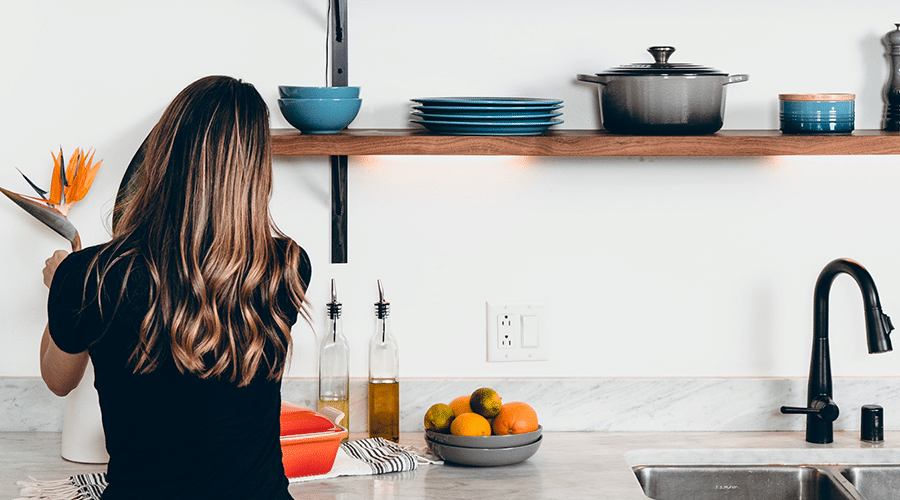
A few high-end kitchen decor pieces can go a long way in helping build the fantasy that people with good taste (and lots of disposable income) would love in the home. Just remember that they don’t have to be super-high quality and expensive—they just have to look super-high quality and expensive. Grab some beautiful oil and vinegar decanters, a classy utensil holder from Le Creuset, or a Polish pottery dish for fresh fruit and you can’t go wrong.
Ask your homeowners to remove as many appliances from the counter as possible to open up the kitchen and give it some space. The kitchen is an easy place for clutter to pile up. I promise, this one trick will make your homeowner reconsider moving once you expose their now usable counter space. And future buyers will be able to imagine themselves entertaining in the home, too.
10. Use Large Potted Plants to Fill in Empty Spaces
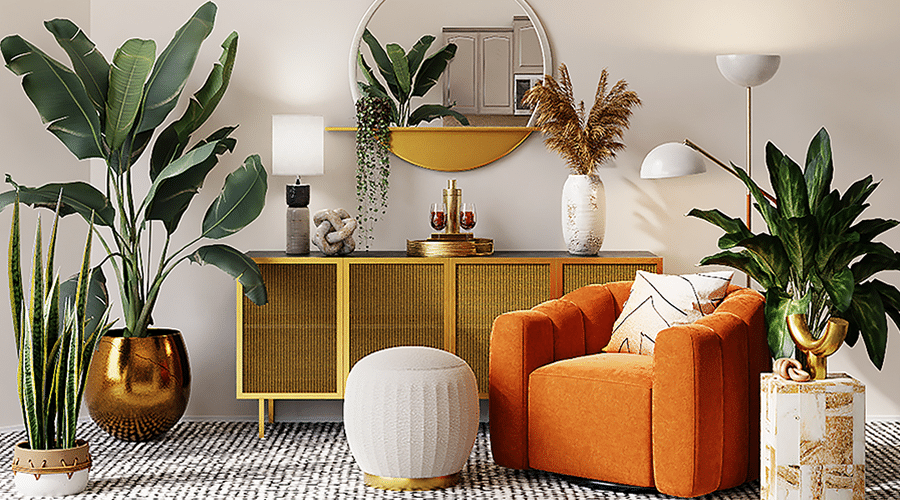
Potted plants do more than just clean the air. They are also perfect for filling in empty spaces in the home when you don’t have enough furniture. Plants give a room character and warmth. You don’t need a lot of big furniture pieces if you have some well-placed greenery to accent the items you have.
11. Paint the Walls Muted Colors & Let the Furniture Pop
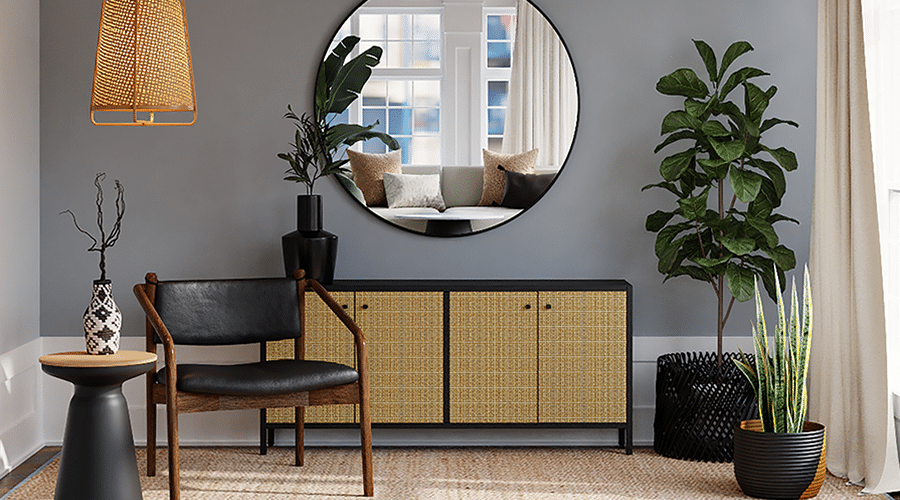
Dark-colored walls run a risk of alienating a sizable percentage of your buyers. Instead, err on the side of caution painting with softer, muted colors, letting the furniture pop instead. I usually suggest Sherwin Williams’ Agreeable Gray, which is a warm greige color, for my clients. Think of your listing’s walls as a blank canvas for future homeowners.
Treat accent walls the same—keep the colors neutral and soft. It’s OK to have a colorful wall, especially in the kitchen, bathroom, or bedroom. You can have a soft pink, blue, gray, or even a light, airy yellow. But try not to overpower the room with the color choice.
12. Use Art & Coffee Table Books to Build the Fantasy
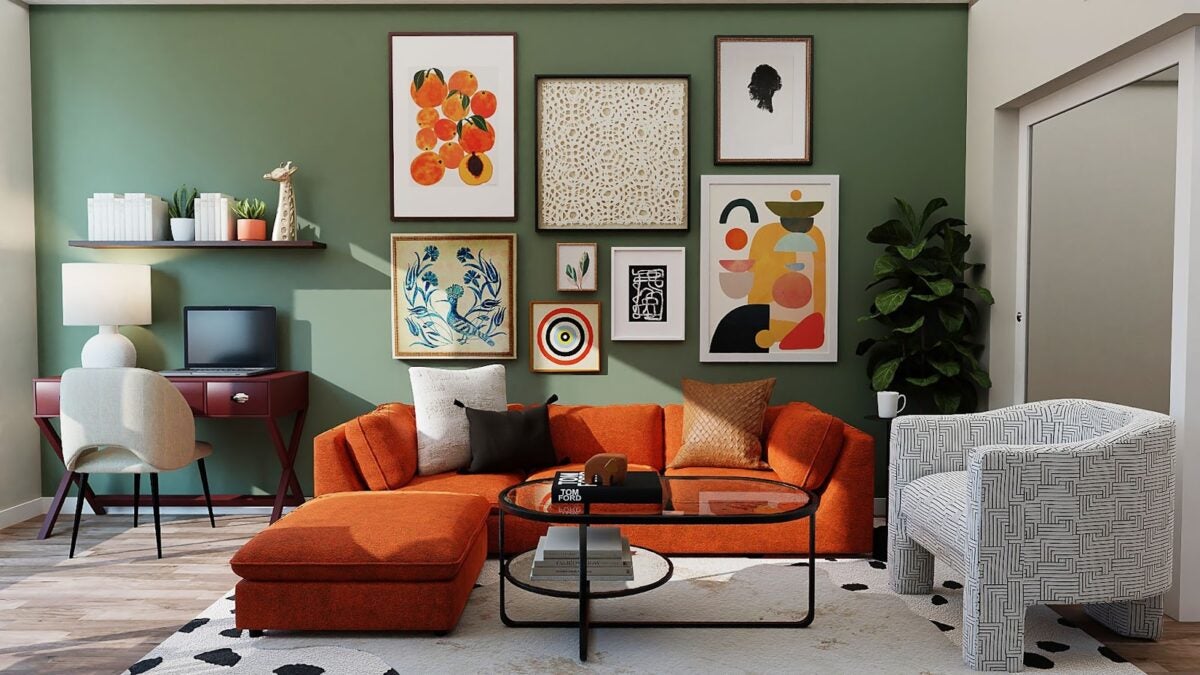
There is a very good reason why almost every high-end home you see on Zillow is staged with oversized art and fashion books and cool pieces of art. They help build the fantasy that people looking at the home imagine for themselves. Find coffee table books at used bookstores or even your local thrift store. It doesn’t have to be super expensive to look great in your staged home.
Or find some fun local art that reflects the area you live in. I live in Florida, so I tend to keep a lot of art with shades of blue and sand colors, representing the beach lifestyle Florida is famous for. When folks come here to shop for homes, they’re looking for more than a house—they’re looking for Margaritaville. Am I right?
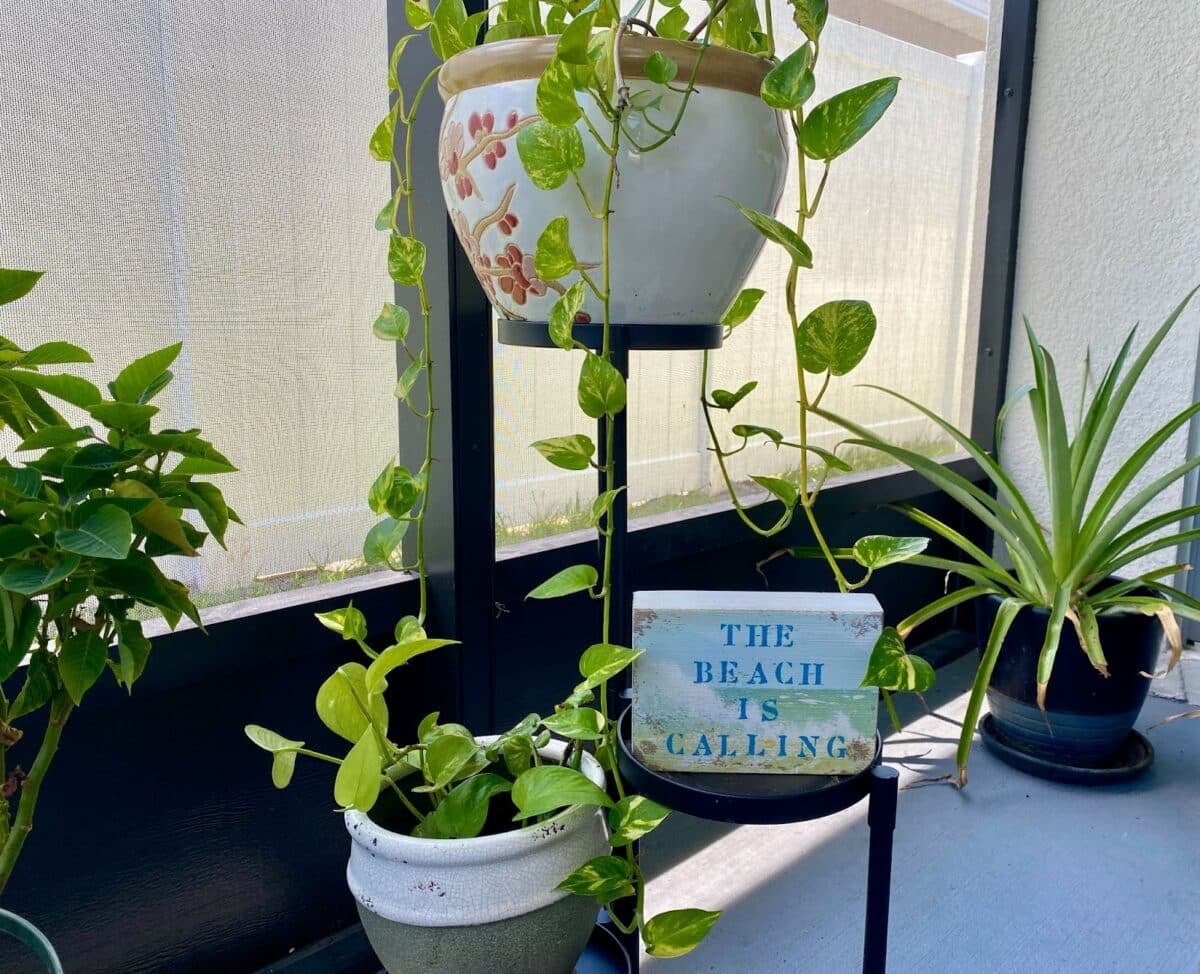
13. Paint Kitchen Cabinets
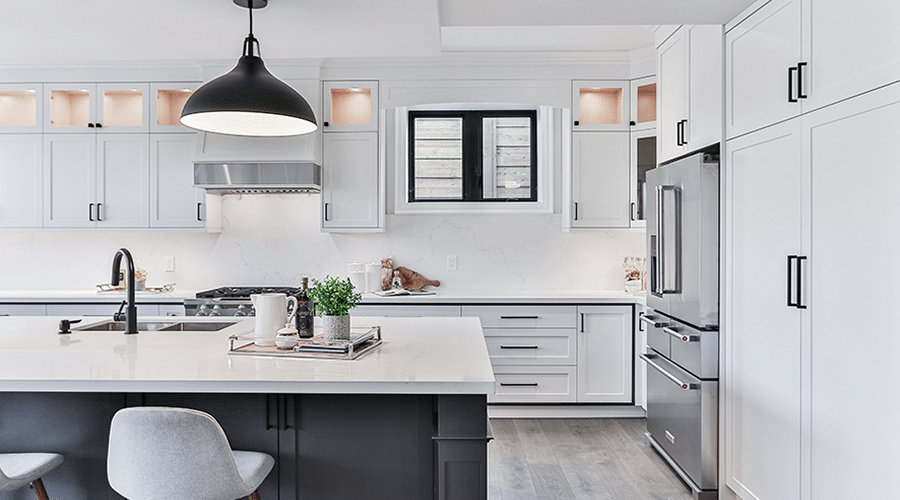
If you’re working with a dated kitchen, a fresh coat of paint can work wonders to bring it into the 21st century on a budget. Even if the homeowner doesn’t want to tackle the project themself, hiring a professional to spray them will still be a fraction of the cost of replacing them.
If your seller has stained wood cabinets, you might try some Restorz-It Wood Finish to spruce up the surfaces. The product fills in the spots where the finish is worn away, hides damage, and gives it a new protective seal. With about $60 and some elbow grease, your clients can get their cabinets looking almost new again in no time—no contractors needed.
14. Replace Handles & Drawer Pulls in the Kitchen
While we’re talking about kitchen cabinets, consider replacing the handles and drawer pulls too. It may seem like a simple detail, but your potential buyers will notice. Replacing old, worn, or dated hardware with some new modern pulls will make the kitchen feel fancy.
15. Accessorize the Bathroom
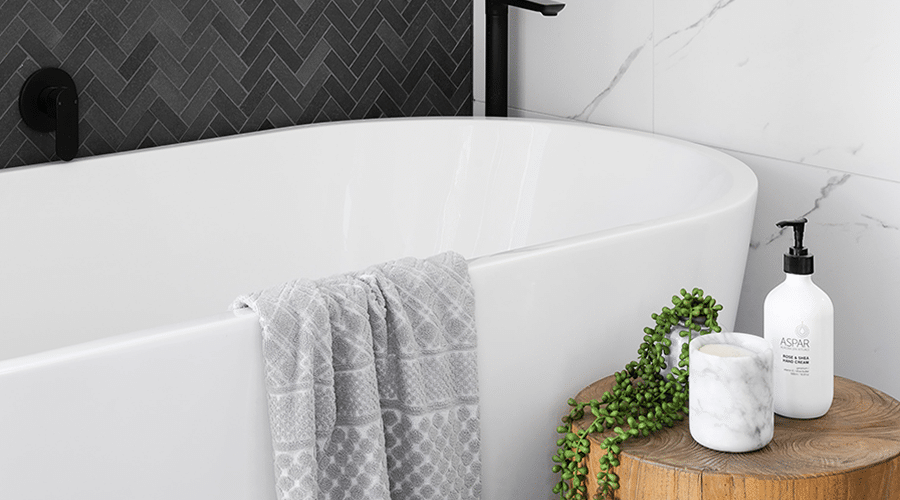
While you might want kitchen counters to be as clear as possible, an empty bathroom looks cold and lifeless. To quickly add warmth to a bathroom on a budget, add accessories like plants, candles, or high-end soap bottles.
16. Go Gender-neutral When Staging Children’s Bedrooms
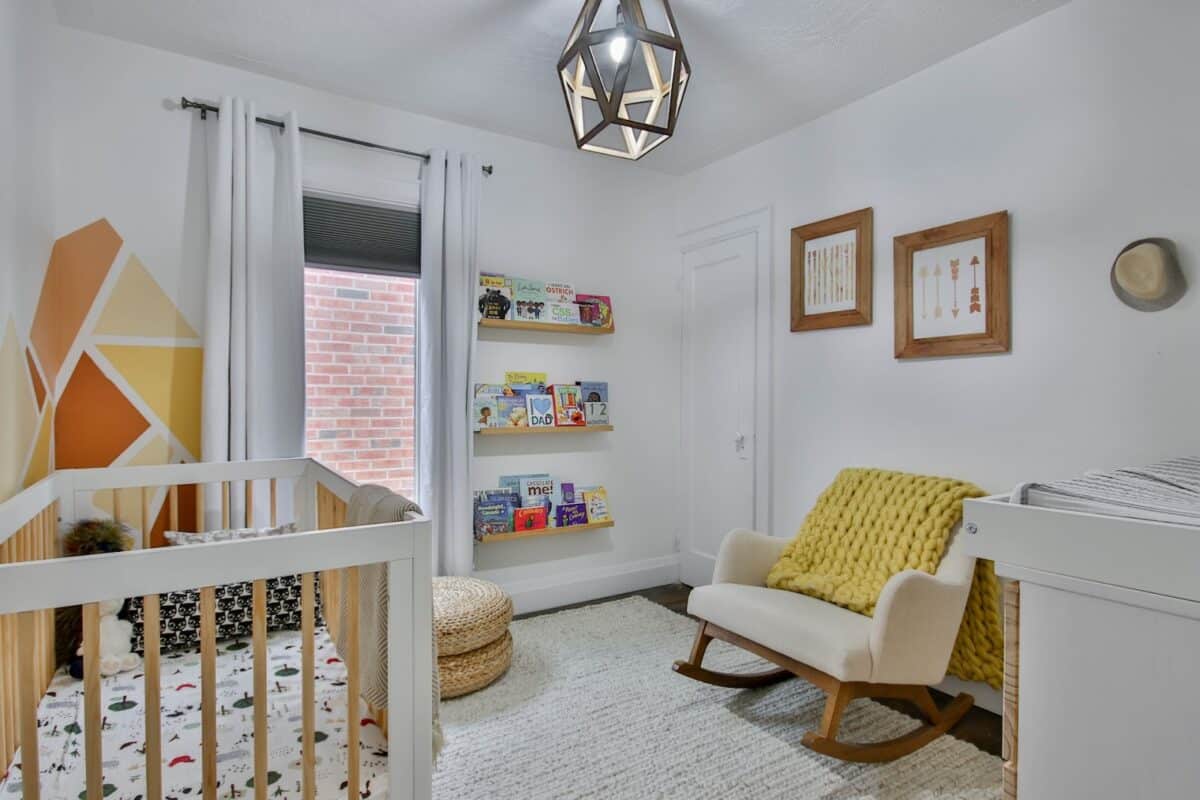
Whenever you stage a child’s bedroom, make sure the furniture and decor you choose are gender neutral. You have no way of knowing the gender of your buyer’s children, so creating a typical boy’s or girl’s room can kill the fantasy for them. Instead, they should immediately be able to imagine their child being happy in the room.
17. Refinish Damaged or Heavily Worn Hardwood Floors
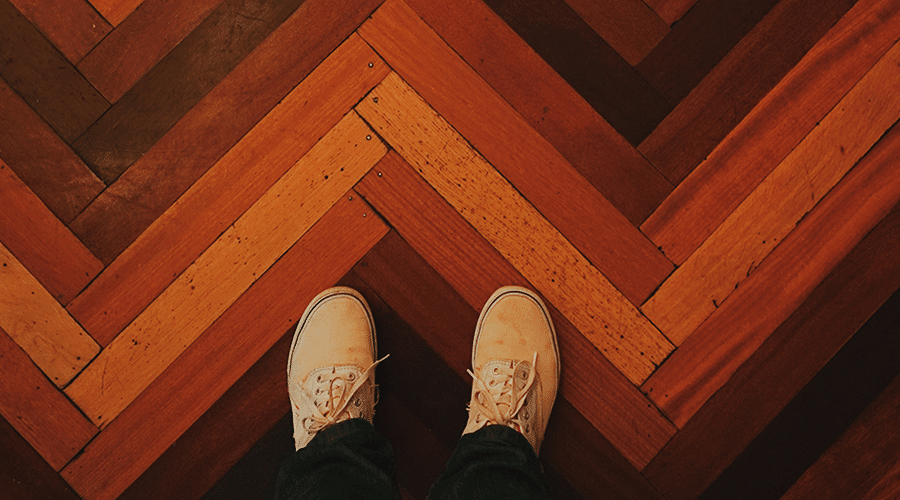
Refinishing hardwood flooring or sprucing up luxury vinyl plank is an easy and affordable way to upgrade a home. If the floors are damaged or heavily worn, especially in larger rooms with lots of open floor space, you can quickly restore their sheen with a product like Rejuvenate All Floors Restorer.
You’ll be surprised at the instant makeover from a quick refinish of the floors. After all, your client could have the most beautiful furniture in the world, but if the floors are scuffed up and dirty, the entire room will feel cheap. Even a quick refinishing of a laminate floor will make the whole house sparkle.
18. Stage the Front Entrance of the Home

Since the front door will be the first impression buyers get when they step out of the car, staging the front entrance is crucial. You don’t have to go overboard here either. A few potted plants, a chair and cafe table if there’s a porch, or maybe even sconce lighting, and you can easily make a front entrance much more inviting.
Ask your sellers to power-wash the exterior of the home, as well. They’ll be shocked to see the difference a good scrubbing of the driveway, sidewalks, and facade makes.
19. Use Virtual Staging
Don’t forget the latest virtual and augmented technology for staging techniques. Virtual staging today can showcase multiple uses of a room, offer different styles of decor to reflect the latest trends, and so much more. The ideas are only limited by your imagination.
OK, it’s story time: I once had a listing where each room had a different color of paint on the walls. And it wasn’t just an accent wall, either. Each wall in every room was painted a bright color. The feedback I got from agents who brought the few buyers I attracted with the listing was that buyers couldn’t get past the first room, which was painted bright green, during showings.
I had my favorite photography company, J Beard Graphics, virtually paint the walls to a more neutral color, Agreeable Gray—the best color for walls. I placed a few photos with the virtually painted walls in the MLS listing and had an offer accepted within three days.
The virtual paint job made all the difference.
The 6 Best Virtual Staging Software 2024 & Virtual Staging Guide
What Not to Do When Staging
Don’t Forget About Pets

You don’t need to hide the fact that your client has pets in the home, but the last thing you want is for potential buyers to walk in and be hit in the face with pet odors and then see food bowls on the floor. All the hard work you put in to get the home show-ready will be for nothing if the pets overwhelm the home.
Make sure to deep clean carpets (and possibly furniture) to remove any lingering pet odors. Ensure pets are not visible (or heard) during showings. Have the homeowners either kennel them, drop them off at doggie daycare for the day, or take them with them during showings. And hide the doggie dishes away when potential buyers come to view the home.
Don’t Go Overboard With Repairs
Maybe your client needs to replace a roof or an HVAC system before they can sell. But don’t let your clients go crazy with full bathroom or kitchen makeovers just to list the home for sale.
First, they’ll invest a lot more money than they will recover in the home sale. A renovation job almost always costs more than what is budgeted and takes longer to complete than estimated. Let your clients know that big renovation projects should be left for the new homeowner after the sale.
Most new homeowners want to tackle those projects anyway to make the home their own. So, there’s no need to do anything more than a little spruce up before selling the home. The simple fixes in this article are more than enough to get the home sold quickly.
Don’t Skip the Deep Clean
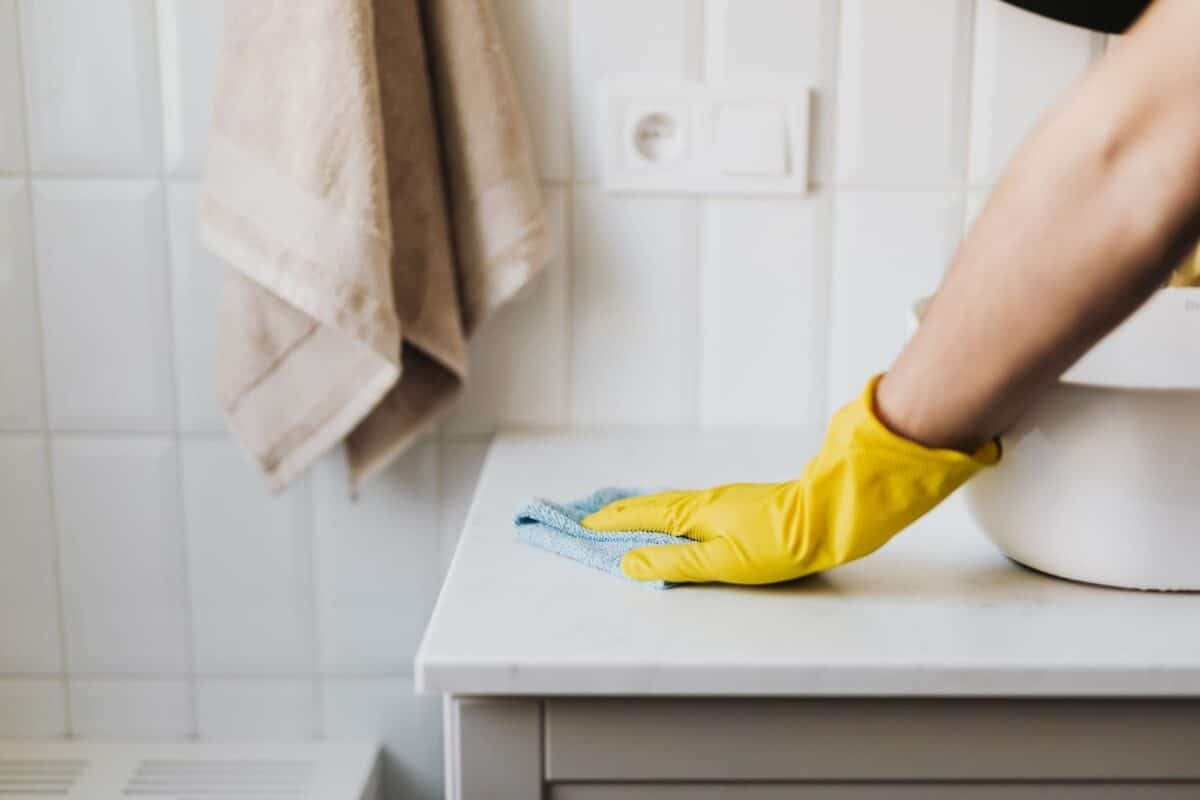
Cleaning the home will actually go a long way in making it presentable for showings. But a dirty home will turn off even the most indiscriminate buyers. If your clients aren’t the best housekeepers, suggest hiring professional house cleaners to do the job right. They will clean areas that your clients won’t even think to clean, like the windows (inside and outside), baseboards, cracks and crevices, and they will dust everything. I’ve hired professional cleaners myself as a gift for my clients.
Don’t Go Crazy With Themes
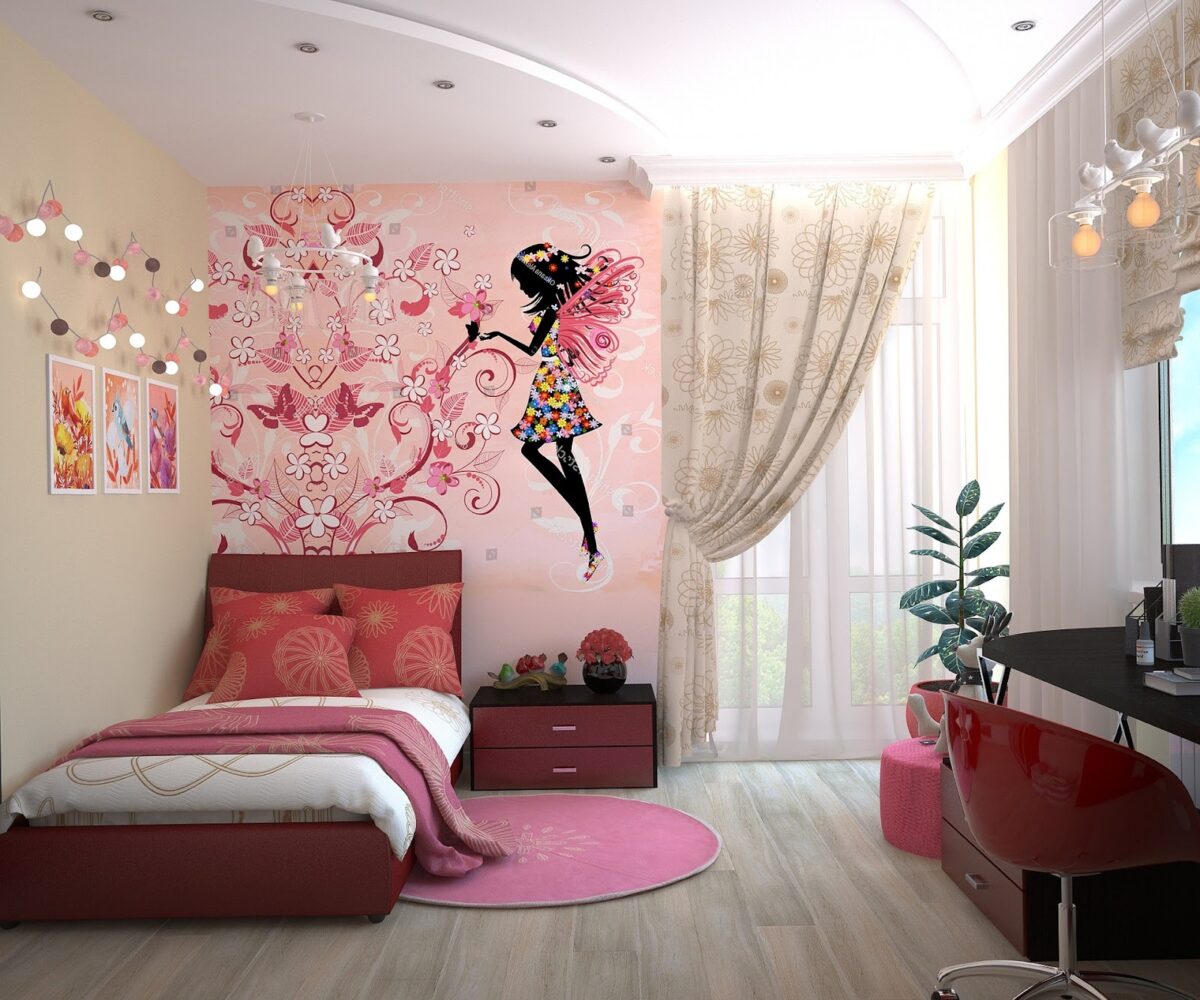
I love a fun-themed room as much as the next person. And I really wish I had a room as beautiful as this one when I was growing up! But when it comes time to get your listing show-ready, it’s time to tone this kind of decor down. You want to allow potential buyers to see themselves in the room, not your client (or your client’s kiddos). Keep the colored accent wall, but remove the stencils, name signs, and any added colors. If the wall is painted in multiple colors, it’s best to repaint it with a solid color instead.
Don’t Over-stage
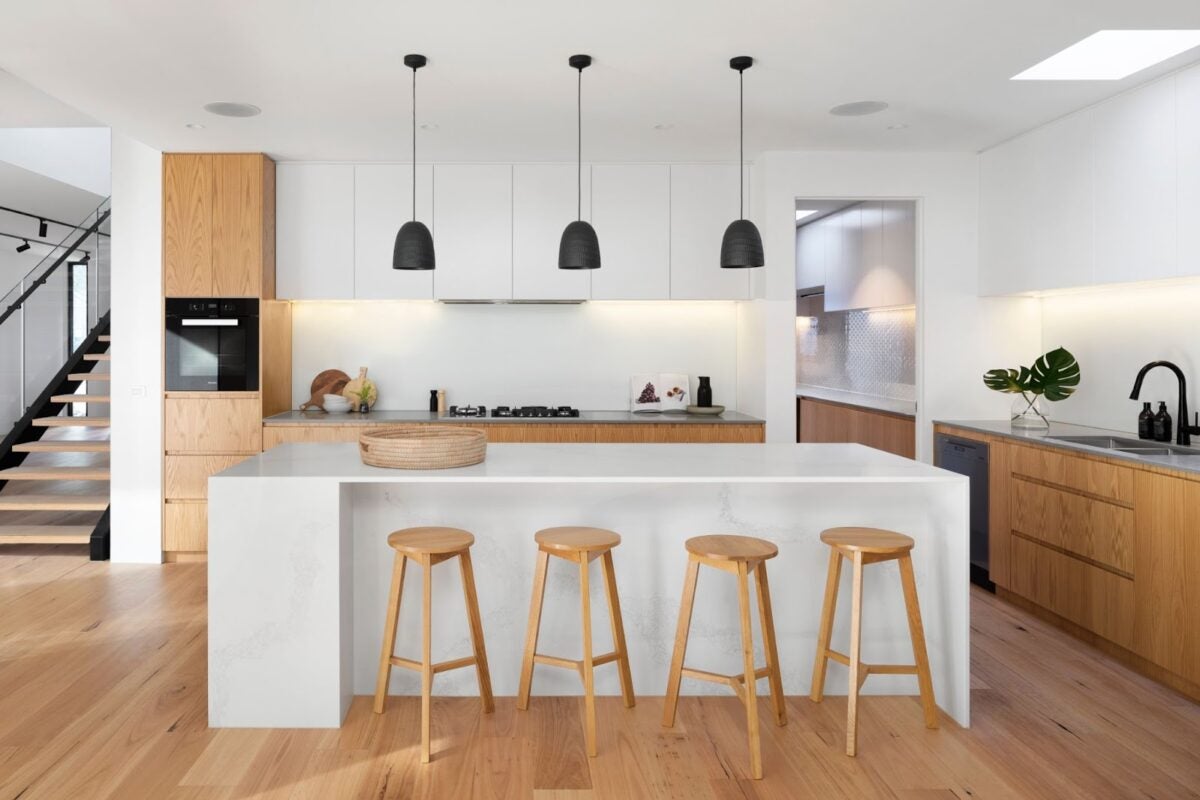
I’ve shared a lot of home staging tips for what you can, and should, do with your listing to prepare it to sell. But the worst thing you can do is remove so much from the home that it leaves buyers feeling empty and cold. That may sound like a lot of contradiction, but the best rule of thumb is to remove enough to open the home, but leave enough for it to still look like a home.
Honestly, this comes with time and practice. You innately know what feels right. Trust your instincts. You’re a homebuyer too, so you will know when the room feels good to you. And your clients will feel it too.
Use as many of your seller’s or your pieces as possible when you’re staging. That will keep the personality of the home intact while allowing you to express some flair.
Clear rooms of anything that doesn’t add value and keep the things that add interest without taking away from the house as a whole. Remember, you’re not staging the home for a photo shoot for Architectural Digest. The home should look like a home, not a museum.
Where the Pros Shop: DIY Home Staging Resources on a Budget
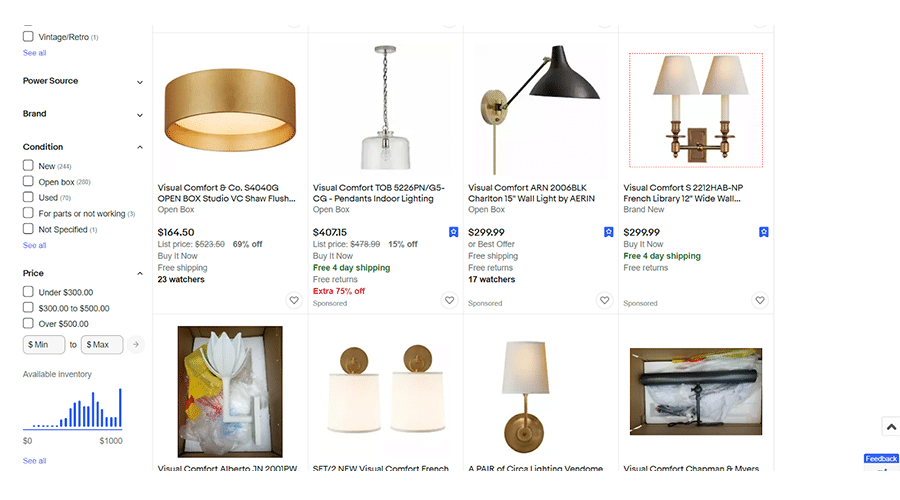
Whether you’re ready to hang your shingle as a stager or just want to have a few decorative pieces to help your homeowner stage on their own, knowing where to shop is crucial. Nice furniture and decor are expensive, but they don’t have to be if you know where to shop.
Here are some resources professional stagers and prop masters use to buy high-end (or high-end-looking) furniture and decor on a shoestring budget:
eBay
Best for: Lighting, art, vases, kitchen and bath accessories, and bedding
eBay can be an incredible resource for smaller items that would be prohibitively expensive to buy retail. It’s perfect for high-end lighting and small kitchen appliances since you can sort by “for parts, not working” (FPNW) to buy broken items that still look great for a fraction of the retail price.
LiveAuctioneers
Best for: Decor, art, collectibles, lighting
Although they’re mostly known for pricey art auctions, you can often find auctions of estate sales that have very affordable prices. Just beware that LiveAuctioneers charges buyer premiums, so factor that into the price you bid.
Craigslist & Facebook Marketplace
Best for: Furniture, lighting, kitchen and bath accessories
Depending on the city you live in, Craigslist and Facebook Marketplace can be a gold mine for home staging. Why? Well, wealthy people who need to move often give away nice things for free or well below cost.
West Elm & Pottery Barn
Best for: Kitchen and bathroom accessories, decorative objects
While the furniture at stores like West Elm is expensive even on sale, their kitchen and bathroom accessories are surprisingly affordable (and even more so on sale).
IKEA
Best for: Furniture, lighting, shelving, kitchen and bath accessories
IKEA is a stager’s best friend! You can get sleek, modern-looking Lack shelves starting at just $8 per shelf. Sure, it’s not well-made, but IKEA’s furniture and shelving often look more expensive than they are.
Etsy
Best for: Decor, collectibles, lighting
If you’re looking for quirky, one-of-a-kind decor, look no further than Etsy. Many Etsy stores sell vintage decorative items like old cameras. They will be more expensive than on Craigslist, but the selection is much better.
Your Own Home
Best for: Kitchen and bath accessories, art, decor
It’s the little things that help make a kitchen or bathroom feel like a home. After you’ve been in the business for a bit, you will probably have a nice stash of decor, curtain panels, bathroom accessories, and more that you can tap for any staging project.
Here’s a cool trick: Save fancy bottles from your recycling bin and decorate with them by flowers, herbs, lights, or decals. You can get some great ideas from Etsy. I like to save wine bottles that are especially decorative, and it helps that I have a healthy supply of those. 😜
Home Staging Tips FAQ
Who pays for home staging?
Who pays for home staging depends on the value of the home, how aggressively priced the home is, and the agreement the homeowner makes with their listing agent. Once they understand that home staging can lead to a 1% to 20% increase in a home’s selling price (according to NAR), many homeowners will happily pay for home staging.
With more affordably priced homes, like the ones I typically sell, I help the seller with my consultation and have them do most of the work without a professional stager. They rely on my expertise and experience for direction and do the work themselves.
How do I stage a luxury home?
For a large luxury home, the home staging process generally begins with the listing agent sending a professional home stager to the home to estimate the scope, direction, and costs of the project. Once the stager, homeowner, and listing agent agree on the scope and price for staging, a contract is signed.
Most home staging contracts are for a period of three months or more. Then the furniture and decor are installed in the home. After the home sells, the stager then returns to remove the furniture and decor from the home.
How do I stage starter homes & more affordable listings?
Unlike luxury homes, most starter and affordable homes are staged by the homeowner working with the listing agent. If the home is staged by the homeowner or listing agent, the listing agent will visit the home to go over the scope and cost of the staging project.
Once the homeowner and listing agent agree on the scope and cost, they will split the work of staging the home. For example, a homeowner might declutter the home and pay a contractor to refinish hardwood floors or paint the living room, and the listing agent might bring over furniture or artwork to help stage the home.
Over to You
Staging a home is vital for marketing and selling the home as quickly as possible. But this is not an exhaustive list. Do you have great home staging tips we missed? Let us know in the comments.






